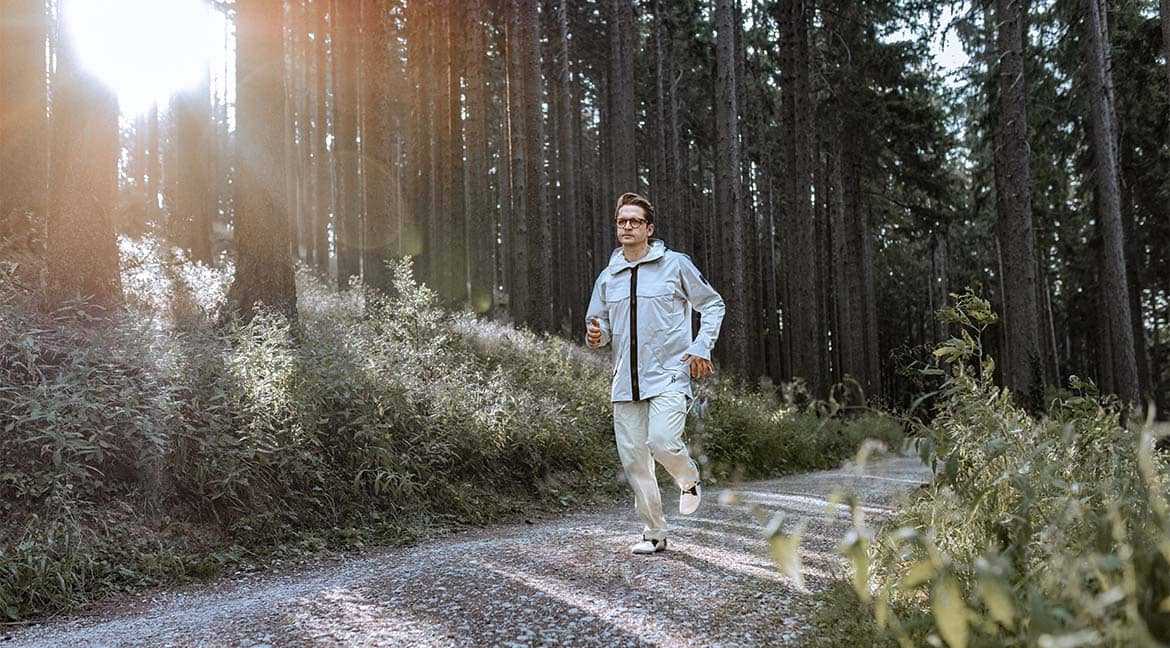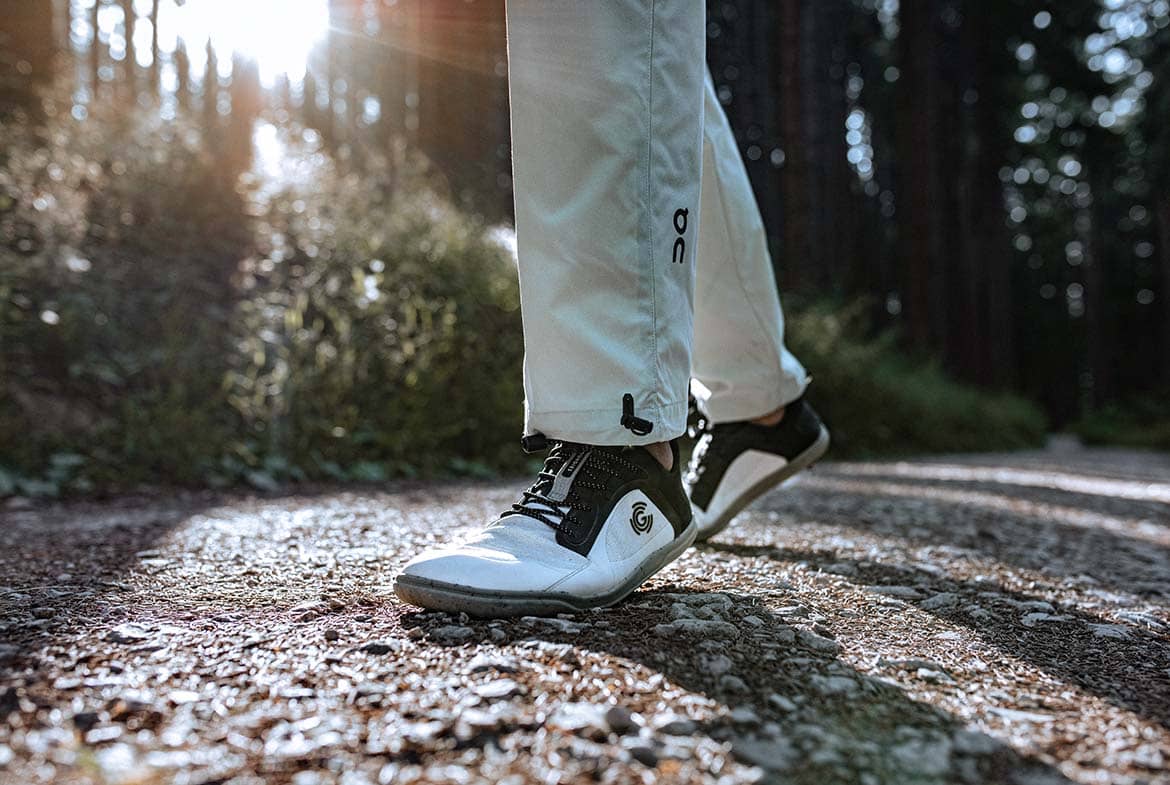
A question of natural cushioning: Are you stronger and injury-free thanks to doing sports in barefoot shoes?!
In addition to an increased sense of well-being, barefoot running is fun and provides health benefits. This includes strengthening your leg and foot muscles and improving your posture. Doing sports in barefoot shoes also facilitates more natural movement patterns. For this reason, they are safer, as well as more dynamic, agile and stable. This can prevent injuries and increase athletic performance. The question of why barefoot shoes have a positive effect on foot and leg muscles and overall posture has to do with their design. Our feet are masterpieces of efficient locomotion that have evolved over hundreds of thousands of years. The following explains how they work, as well as the purpose of barefoot running and playing sports in barefoot shoes.
What are barefoot shoes?
Barefoot shoes are shoes that do not have an offset or a drop from the heel to the ball of the foot. Most conventional shoes are thought of as a wedge. This is not the case with barefoot shoes. In addition, the degree of cushioning in barefoot shoes is low to almost non-existent. The extremely flexible and thin sole is ideally just a form of protection against the not always barefoot-friendly ground of our modern surroundings. Depending on the thickness of the sole and the size of the insole, this can mean minimal cushioning. In addition to the properties of the sole, the foot-friendly cut of many consistently manufactured barefoot shoes is a basic criterion. The idea behind this is that the foot can expand freely and that the toes can splay out unimpeded when you take a step. This is one of the essential conditions for the foot to perform its natural function, and, through sustained activation of the foot and leg muscles, achieve its innate strength and stability.
The foot as a natural cushion
The human foot is a complex structure consisting of seven tarsal bones, five metatarsal bones and 14 toe bones. It is held together, stabilized and moved by 33 joints, 20 muscles and 114 ligaments. The strong fixation of the joints through the ligaments creates a springy arch beneath the foot. Pressure acting from above, such as occurs when running and jumping, is distributed over the ankle and heel bone as well as the midfoot, thus absorbing the load. The foot arch can be thought of as a leaf spring that effectively minimizes impact - and also converts it into efficient propulsion.
Unhindered functioning of the feet
If we consider the basic features of barefoot shoes mentioned above, the flat, flexible sole and the wide shape, and imagine a conventional sports shoe with a wedge-shaped, highly-cushioned sole and narrow cut, we can establish the following facts: With barefoot or flat-sole shoes, 40 percent of the body's weight rests on the balls of the feet and 60 on the heels. In heeled shoes, on the other hand, up to 80 percent of the weight is borne by the ball of the foot - an unnatural imbalance that leads to poor posture! In order for the foot to fulfill its function as a spring, it needs space to spread out. This can be easily observed with bare feet on hard ground: The foot acquires considerable width when it is bearing a load. Its position as a point of contact with the ground, i.e. its function as a central pillar, makes the foot a human's most important supporting organ. Measured against their size, a human has to bear an enormous weight.

Run the right way in barefoot shoes
For the feet to fully fulfill their functions, you also need to consider a natural running technique. With a wedge-shaped and stiff running shoe, most athletes - apart from professional athletes - take long strides, planting the foot in front of the center of the body and rolling off via the heel. This deprives the foot of its function. In this case, the running shoe's high and soft heel takes on the foot's cushioning function, only without its sophisticated stabilization system. If you were to deliberately try to roll over your heel while barefoot, it would be a painful and unstable affair on most floors. This is why running barefoot or with barefoot shoes changes the running technique. The steps become shorter and the foot touches the ground with the mid or forefoot being beneath the body's center of gravity. This changes the body's entire posture and its overall movement becomes more fluid and economical, something that also goes hand in hand with a more dynamic, agile, and stable locomotion, and is healthier as a result.
Patience when switching to barefoot shoes
Based purely on the foot's function and over 100,000 shoeless years of evolutionary history, there's not much to be said in favor of cramming your feet into shoes that are too tight and have wedge-shaped and cushioned soles. However, let's take a person who has spent most of their life in shoes that are too tight and have a large offset. Their musculoskeletal system, muscles and tendons, and posture are adapted to running with conventional shoes. Accordingly, your body cannot adapt to a switch to barefoot running shoes overnight - not excluding exceptions, of course. This is because the first thing you have to do is to strengthen your muscles and get your body used to the new yet original load. However, your patience will certainly pay off, and your progress will be noticeable as you enjoy your movements more.












